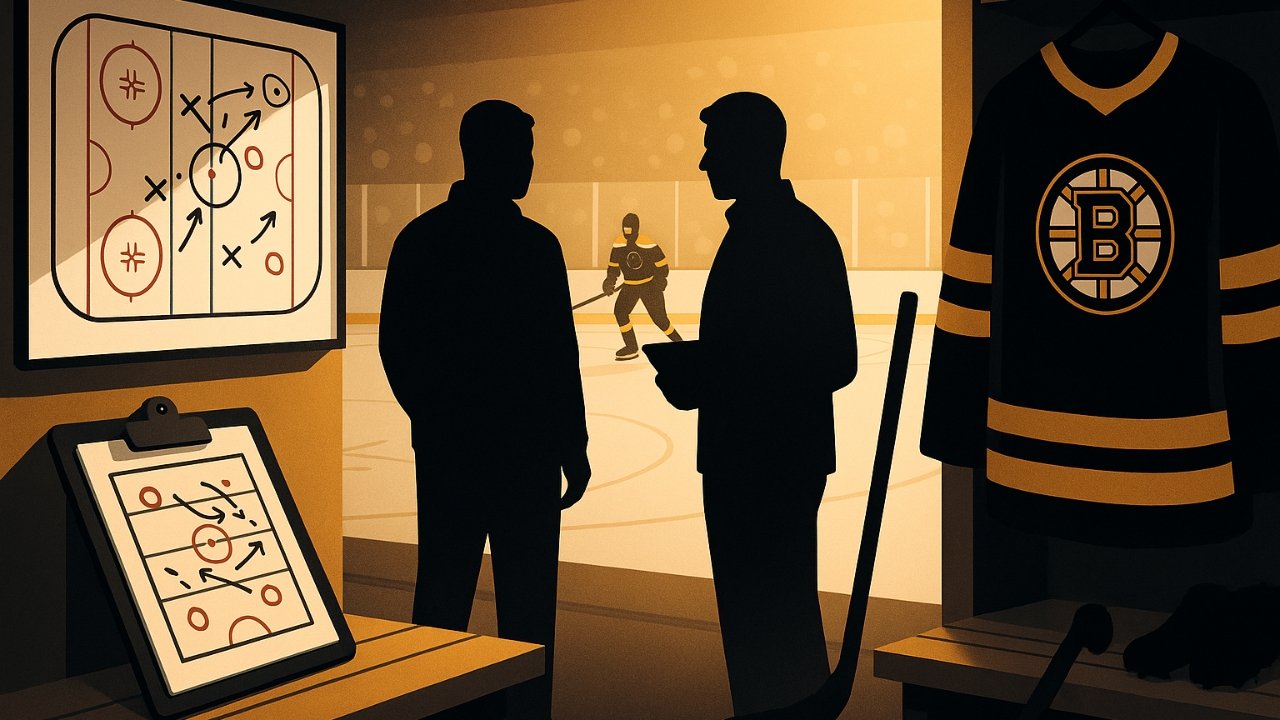Bruins player development: The Boston Bruins have widened and formalized their player-development structure, promoting franchise alumnus Adam McQuaid to a newly titled Director of Player Development and bringing in Ben Smith as Player Development Coordinator. The reorg also elevates support roles on both NHL and AHL fronts, signaling a deeper investment in the prospect pipeline and the day-to-day systems that help young players translate tools into NHL habits.
What changed—and why it matters
- Adam McQuaid → Director of Player Development: McQuaid moves from a hands-on role working with skaters into leadership of the department. The new title clarifies accountability for setting development plans, coordinating with scouting and coaching staffs, and ensuring a consistent teaching language from draft day through AHL graduation.
- Ben Smith → Player Development Coordinator: Smith joins to work directly with skaters, blending video work, skill development, and pro-readiness mentoring—particularly valuable for players adjusting to different roles than they held in juniors or college.
- Video & performance support sharpened: The NHL staff adds an Assistant Video Coordinator (Nick Neary), while Providence (AHL) installs Cam Wolbach as Video Coordinator and Wyatt Lawrence as Performance Coach. Those moves tighten the loop between teaching points, data, and on-ice execution.
In short, Boston didn’t just add people—it clarified responsibilities. A more explicit org chart tends to speed up communication, give prospects clear points of contact, and make it easier to measure what’s working.
Why McQuaid for director
McQuaid brings credibility you can’t manufacture. A Stanley Cup-winning defenseman with nearly a decade in a Bruins sweater, he understands the standards the organization sets—pace, physical commitment, structure—and the pressure that comes with playing in Boston. In development, that credibility translates into buy-in: when a director asks a prospect to tweak posture on retrievals, manage risk at the blue line, or change a workout block, the message carries weight because he’s lived it.
As director, expect McQuaid to:
- Own individualized plans: Set technical, tactical, and conditioning benchmarks unique to each player—then revisit them at set intervals.
- Align departments: Keep scouts, skills coaches, Providence staff, and the NHL bench on the same page so feedback isn’t fragmented.
- Standardize teaching: Ensure video clips, terminology, and drills tell one coherent story from development camp to call-up.
What Ben Smith adds
Smith’s path—NCAA titles at Boston College, NHL depth minutes on a Cup team, a Calder Cup, and European leadership roles—touches almost every rung a prospect might climb. That range matters. He can teach high-end details (puck protection angles, deception on entries) while also coaching the realities of role acceptance, travel, and maintaining form when minutes fluctuate.
Expect Smith to focus on:
- Pro habits for skaters: Wall play, retrieval reads, forecheck routes, and quick-hit decision trees that survive NHL pace.
- Role transitions: Preparing scoring leaders from junior to thrive as middle-six pros—killing penalties, taking d-zone starts, or driving a checking line.
- Film that sticks: Short, purposeful clips a player can act on in the next practice—not bloated edits that overwhelm.
The hidden levers: video and performance
Modern development runs on two rails—film and physiology. By promoting Neary to the NHL staff and staffing Providence with dedicated video and performance leads, the Bruins are tightening the feedback cadence:
- Video: Faster pre- and post-game cut-ups, clearer trend tracking (entries denied, retrieval wins, net-front seals), and better pre-scout support for both Boston and Providence.
- Performance: In Providence, a dedicated performance coach can personalize lifting, recovery, and in-season maintenance so prospects hit the NHL ready to handle back-to-backs and travel.
These are small edges that compound. A cleaner film workflow means a winger corrects a forecheck route tomorrow, not next week. Smarter load management means a defenseman’s stride looks the same in March as it did in October.
What success looks like
Bruins player development bets will be judged less by headlines and more by throughput:
- Time-to-NHL: Fewer months from signing to useful NHL minutes.
- Role clarity: Prospects arrive knowing which two or three jobs they must nail to stick.
- AHL → NHL translation: Skills honed in Providence (PK details, board battles, middle-lane drives) appear unchanged when the player hits Boston ice.
If the Bruins get this right, they’ll graduate more contributors on entry-level or modest bridge deals—vital fuel for a contender navigating the cap.
How it could change the day-to-day
- Tighter check-ins: Regular, scheduled progress reviews instead of ad-hoc feedback.
- Shared language: The same terms and drills used in development camp show up in Providence practices and Boston meetings.
- Faster pivots: If a prospect stalls, the group can quickly adjust the plan—new skills work, different usage, or a targeted conditioning block.
Providence’s central role
The AHL is where plans meet reality. With dedicated video and performance staff, Providence can function as an extension of the NHL bench’s expectations—not just a proving ground. That means clearer game-to-game teaching points for prospects and immediate alignment with the big club’s systems.
The bigger picture
For an organization that expects to contend annually, finding value from within is non-negotiable. This reshuffle formalizes what winning teams already know: talent identification starts the journey, but development determines who actually arrives. By elevating McQuaid, adding Smith, and reinforcing support roles, the Bruins are betting structure and clarity can turn more prospects into dependable NHLers—sooner.







